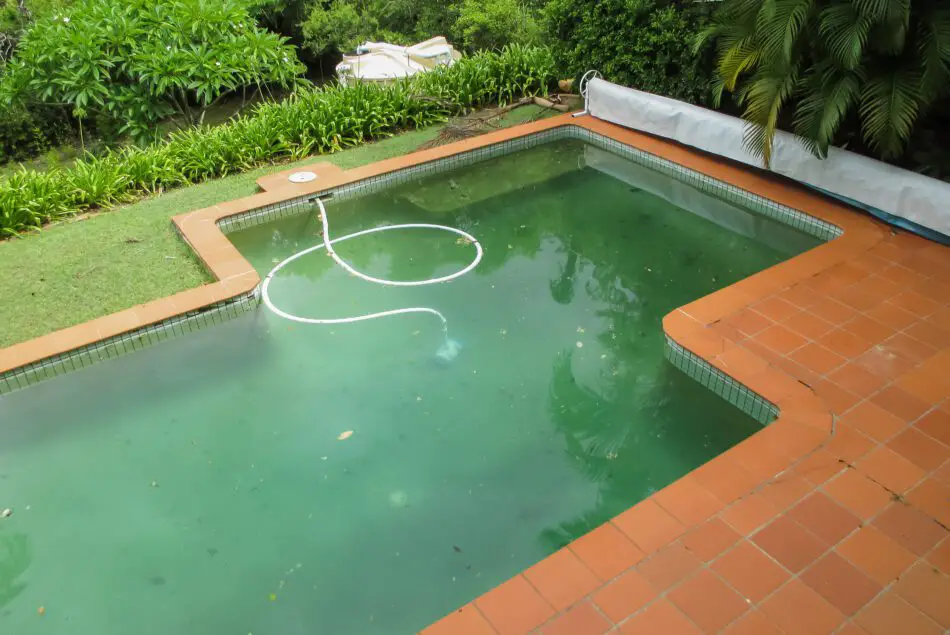
Pool algae is an unfortunate yet common problem many pool owners face. This article describes the types of algae and how you can prevent it.
Maintaining free chlorine in recommended levels is the most important activity in terms of ensuring your pool and hot tub are clean and safe to use. However, recommended levels are not necessarily the same for both pools and hot hubs. Further, recommended levels are dependent on cyanuric acid. And the effectiveness of free chlorine’s ability to kill contaminants is largely dictated by the pH level of the water.
In this article, we are going to take all these factors into consideration to determine what chlorine levels should be in your pool or hot tub. If you would like a primer on types of chlorine, check out What is Free Chlorine, Combined Chlorine, and Total Chlorine?
The Association of Pool and Spa Professionals recommends free chlorine levels be kept between 2.0 and 4.0 ppm. The Center for Disease Control recommends free chlorine stay above 1 ppm in pools and 3 ppm in hot tubs.
The easiest way to check your chlorine levels is with test strips. Free chlorine is the amount of chlorine freely available to kill bacteria and other contaminates.
The recommended amount of combined chlorine is no more than 0.2 ppm. Combined chlorine or chloramines is the portion of chlorine that has reacted with the water and microorganisms contained in it. It is a temporary form of chlorine that should be eliminated if there is enough free chlorine in the water to continue killing contaminates. Too much combined chlorine (i.e. more than 0.5 ppm) means that there is not enough free chlorine available to kill all the contaminates. When combined chlorine reaches these levels, the water may cause skin and eye irritation, be harmful to swim in due to bacteria, and may allow algae to form.

Pool algae is an unfortunate yet common problem many pool owners face. This article describes the types of algae and how you can prevent it.
If free chlorine ever falls below the CDC recommended minimum of 1.0 ppm in your pool or 3.0 ppm in your hot tub, it is recommended that you shock your pool to kill contaminates and return your free chlorine back to desired levels. When your free chlorine levels get too low, we recommend using calcium hypochlorite to raise them back up.
Total chlorine is the sum of both free chlorine and combined chlorine. The ideal scenario is for total chlorine to be equal to free chlorine. That is to say, there is enough free chlorine available to kill contaminates efficiently.
There are two reasons the recommended minimum level of free chlorine in hot tubs is higher than free chlorine in pools.
The first reason is that spa jets may contribute to free chlorine combining to kill contaminates more quickly. The second reason is that hot tubs tend to have a higher concentration of contaminates because they have a higher concentration of users. Ten people swimming in a 30,000-gallon pool equates to one swimmer per 3,000 gallons of water. The same number of people in a 3,000-gallon hot tub equates to one person per 300 gallons of water. Not only that, but hot tubs cause people to perspire more, further increasing the concentration of contaminates. Therefore, a higher minimum concentration of free chlorine is needed to combat the higher concentration of contaminates in hot tubs.

Want to learn more about algaecide? Read on to find out when to add algaecide to your pool maintenance routine and other helpful tips.

In this quick guide, we’ll answer the question “can you over shock a pool” and unveil the factors to consider when shocking a pool.

Maintaining both pH and total alkalinity in your swimming pool is important for keeping your pool properly sanitized and non-corrosive. Total alkalinity is to pH what cyanuric acid is to free chlorine. Total alkalinity stabilizes pH levels. The ideal pool pH level is 7.4 to 7.6. The ideal total alkalinity level is 80 to 120 ppm.

The Association of Pool and Spa Professionals recommends free chlorine levels for both swimming pools and hot tubs be kept between 2.0 and 4.0 ppm. However, the Center for Disease Control recommends free chlorine stay above 1 ppm in pools and 3 ppm in hot tubs.